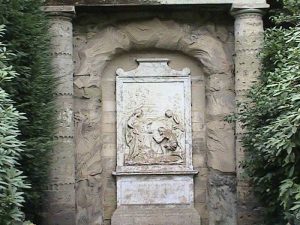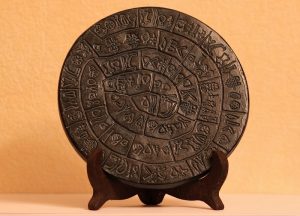About the mysterious
Signal “Wow!”
Signal “Wow!” (“Wow!” signal) was registered by Dr. Jerry Eyman on August 15, 1977. At the time, the doctor was working on the Big Ear radio telescope at Ohio State University. When Eiman heard the signal, he was so startled that he wrote “Wow!” on the side of the fixed characters. (“Wow!”). This signature gave the signal its name. All characteristics of the received signal corresponded to the parameters of extraterrestrial signals. The radio signal observation time was 72 seconds.
Astronomers from the United States suggest that hydrogen around the nuclei of comets discovered after 2005 and not taken into account as possible signal sources in earlier work could serve as a possible source of the signal.
Case of Taman Shud
The Taman Shud case is a criminal case initiated upon the discovery of the body of an unknown man on December 1, 1948, on Somerton Beach in the Australian city of Adelaide. The incident also became known as the Somerton Mystery Man Incident.
The case is considered one of the most mysterious mysteries in Australian history. There are many versions on the identity of the deceased and the causes of his death.
Public interest in this incident remains very significant for a number of reasons: for example, during the investigation, some facts emerged that indicate the possible involvement of special services in the incident. In addition, for more than half a century, the investigation has not been able to either establish the identity of the deceased, or accurately determine the method of his killing. The biggest resonance was caused by a piece of paper discovered during the deceased, torn from a copy of a very rare edition of Omar Khayyam, on which only two words were written – Tamam Shud (“Tamam Shud”).
After a thorough search, the police managed to find one of the copies of the book with Khayyam’s poems and with the last page torn out. On the back of the book were several words written in pencil that looked like a cipher.
Monument at Shagborough

At Shagborough in Staffordshire, on the grounds of an old manor that once belonged to the Earl of Lichfield, stands a mid-eighteenth-century memorial. The bas-relief depicts a copy of the 2nd version of Poussin’s painting “The Arcadian Shepherds” in a mirror image and with the classic inscription “ET IN ARCADIA EGO” in the correct reflection. Below the bas-relief, the letters O•U•O•S•V•A•V•V are carved, framed by two more letters D and M. DM may mean Diis Manibus, but the central abbreviation remains unclear. The set of letters is a kind of code, the deciphering of which has been going on for more than 250 years.
Some enthusiasts, among whom were the greatest minds of the world (Charles Dickens and Charles Darwin) suggested that the code could be the key to the information left by the Templars about the location of the Holy Grail.
Phaistos Disc
The Phaistos disc is a unique monument of writing, presumably of the Minoan culture of the Middle or Late Bronze Age, found in the city of Phaistos on the island of Crete. Its exact purpose, as well as the place and time of manufacture, are not known for certain.

Many works have been devoted to the study of the Phaistos disc, and the latter have repeatedly made statements about deciphering the inscription on its surface. However, none of the proposed readings has become generally accepted in the scientific community.
The work on the study of the Phaistos Disc is progressing slowly, which is primarily due to the brevity of the message and the isolation of the writing system used in it. According to most experts, in order to successfully decipher the Phaistos disk, it is necessary to find other monuments of the same script. There are a number of hypotheses about the non-linguistic nature of the images of the Phaistos disc.
The Phaistos Disc is currently on display at the Heraklion Archaeological Museum (Crete, Greece).
Today, the disc remains one of the most famous puzzles in archeology.
